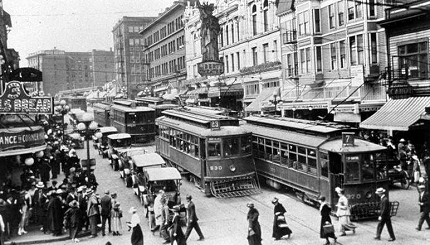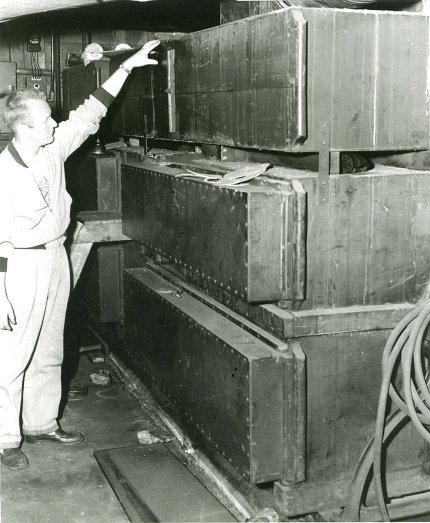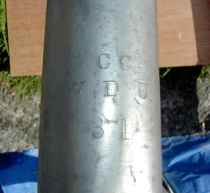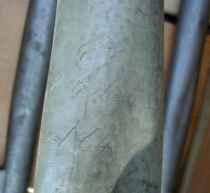

|

Liberty Theatre - 3/20 Wurlitzer, "Special" (including 4 rank Echo)
Seattle, Washington
1st & Pike
Organ installation timeframe: 1914-1955
Back to the Washington Original Theatre Installations page

From a PSTOS Pipeline newsletter...
In 1914, at First & Pike in Seattle, across from the Public Market, the brand new Liberty Theatre was under construction. Until now, movies were shown in remodeled vaudeville theatres. The Liberty was unique at the time,
designed strictly as a movie house. It had no stage or orchestra pit to accomodate vaudeville acts. The plans called for a pipe organ to accompany the films. But what pipe organ?
 |
|
For several years, Wurlitzer had been making a variety of musical instruments to accompany silent movies. But they were inadequate for the rapidly improving moving pictures. There was an acute need for an instrument capable of adding real excitement to the movie. Wurlitzer and Hope-Jones were frantically pushing forward to beat the competition with just the right design, but by 1914, they had not yet installed a truly successful theatre pipe organ. |
|
Desperately needing a contract with a theatre in which to install a "showcase instrument", they eagerly welcomed an inquiry from Liberty Theatre owners, J. Von Herberg and C.S. Jensen. These Seattle entrepreneurs had learned of Wurlitzer's design developments and Hope-Jones convinced them the Wurlitzer was right for the Liberty. |

Von Herberg |

Jensen |
 Detailed stoplist information Detailed stoplist information |
|
A contract was signed for a Wurlitzer Hope-Jones Unit Orchestra, the official name of their new theatre pipe organ, and the instrument was manufactured, shipped, and ready for use when the Seattle Liberty Theatre
opened in October, 1914. It was Wurlitzer's opus #41. The cost was $27,000.

Liberty Theatre interior, c.1914
The new Wurlitzer incorporated numerous Robert Hope-Jones innovations, and provided sounds never heard before in a Northwest theatre. From light ethereal strings to thunderous, stage-shaking full organ ensembles, it was
all there to put a foundation under the flickering black and white images being shown on the screen. And unlike classical organs, it had tremulants, providing a vibrato effect to the music, a great enhancement to the many
romantic movie scenes.

Trollies in front of the Liberty, c.1919
On October 14, 1914, the Seattle Times reported, "Direct from the Vitagraph Theatre in New York City, Henry Bernard Murtagh arrived in Seattle today and will immediately take charge of the mammoth Wurlitzer pipe organ now being installed in the Liberty Theatre.
"Mr. Murtagh is a graduate of the Hope-Jones Unit Orchestra School of New York, enrollment in which is limited to six members only."
"He is especially qualified to operate an instrument of this character on account of an
unlimited experience in orchestral work, which began at the age of 13." In commenting on the new Liberty, Mr. Murtagh said, "I am very enthusiastic about the Unit Orchestra recently shipped from the factory.
Its position in the theatre is not only unique, but it will probably produce results superior to those in the Vitagraph Theatre in New York or the famous Pitt Theatre in Pittsburgh. Patrons of photoplays little realize the
wonderful possibilities of this extraordinary instrument, which is capable of producing a perfect imitation of every known instrument as well as the human voice, the exhaust from a locomotive or automobile, and various other sounds and noises."
"The Wurlitzer Unit Orchestra, when properly operated, simply carries the listener away with its remarkable reproductions. It is particularly adaptable to photoplay work on account of its being subject to the will and
under the absolute direction of one sole operator." |

Liberty interior, c.1920's |

Liberty console, c.1955
For several years, it was to the Liberty Theatre in Seattle that Wurlitzer brought potential clients. It was this instrument that gave Wurlitzer its dominant lead in the theatre pipe organ industry. Farny Wurlitzer, years later stated, "The first outstanding organ we built was the one we sold to the Liberty Theatre in Seattle. We shipped it in mid-1914. It was a tremendous success from the time of its grand opening in October of that year."
"The theatre was built especially as a motion picture theatre with no provision for an orchestra. They depended entirely on our organ for music, and the theatre was quite original. Up to that time, nearly all movie
houses were remodeled theatres. It was such a tremendous success that for three weeks the Seattle police had to take care of the crowds that stood for three blocks waiting for their turn to get into the Liberty. And the
organ deserved most of the credit . . ."
The Liberty Theatre Wurlitzer was unique in an interesting way. The large quantity of air necessary to supply all the pipes came from a 20 horsepower blower (see photo below). |

Liberty interior, c.1955 |
It was run by a 550 volt D.C. motor which in turn received its power from the Seattle street-car lines. Power was available except during the late night and early morning hours when the street-car current was shut down. Late-night movies took careful clock-watching-if they were still running when the street-cars shut down, the organ blower shut down as well, and that ended the music until the next day.

A view of one of the Liberty Wurlitzer's two marimbas. This one had 37 notes with the bars arranged in two rows: sharps on top and naturals on the bottom... like a piano. Later organ marimbas had the bars arranged chromatically. Photo, courtesy Glenn White.
 |
 |
After Henry Murtagh, the Liberty had a variety of organists including Oliver Wallace in 1925 and Katherine Beasely in 1927. The theatre closed for silent films in 1929 and reopened the following year with 'talkies.' The organ was never played publicly again. It was maintained by Dick Simonton and Gordon Blanchard, however, until 1935.
<--- Ads from the Seattle Post Intelligencer, c.1925 for two of the most famous silent movies of all time: The Freshman with Harold Lloyd (note "Wallace at the Wurlitzer" near the bottom) and The Gold Rush with Charlie Chaplin. |
The theatre was finally razed in 1955 and the Wurlitzer was moved by R.B. Fritts to the gymnasium of the Pacific Lutheran University in Parkland Washington (near Tacoma). The organ sold for $1,500.00. The original 20HP Kinetic blower went down with the theatre.
The instrument remained at the university until 1973 when it was moved to its current home at First Church of the Nazarene in Spokane, Washington.

Dan Adamson standing next to the Liberty's massive 20 HP Kinetic blower, date unknown. This unit was demolished with the building in 1955.
Records indicate the Liberty Echo division contained four ranks: Trumpet, Viol d'Orchestra, Viol Celeste and Vox Humana. Markings for the two strings are shown here. Note the "3164" marked on the Viol Celeste. This is the Hope Jones opus number which was used on many early Wurlitzer instruments. The strings were voiced on lower wind pressure (approx 6").

8' CC VDO, Echo division |

8' CC Viol Celeste, Echo division. |

Snow storm, February 1916. Liberty Theatre on right.

1914
|







![]() Detailed stoplist information
Detailed stoplist information











